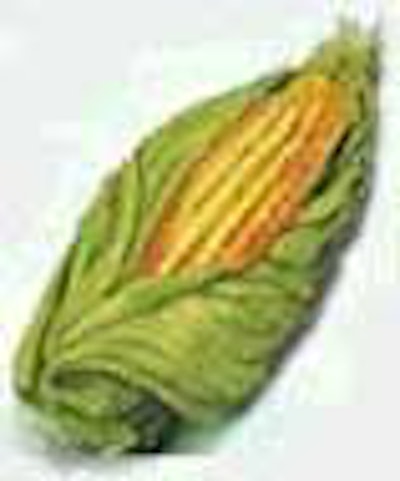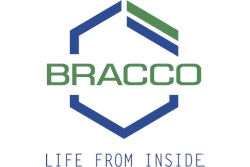
A 1970s TV commercial for a popular brand of corn oil featured a Native American woman gravely intoning: "You call it corn; we call it maize." Now investigators at Rochester General Hospital in New York have another name for it: gallbladder stimulant.
Dr. Grant Eiselen and Dr. Stephen Ferrante turned to dietary corn for diagnosing gallbladder dyskinesia when the synthetic form of cholecystokinin (CCK) became unavailable. Bristol-Myers Squibb had halted production of Kinevac in 2001, resulting in a shortage. A year later, distributor Bracco Diagnostics of Princeton, NJ, resumed manufacturing and marketing of Kinevac.
"The presence of fatty acids and amino acids in the duodenum produce the greatest rate of gallbladder emptying through the mechanism of CCK," the authors wrote in a poster presentation at the 2003 Society of Nuclear Medicine meeting in New Orleans. "The oral fat challenge is advantageous because it utilizes the full complement of endogenous cholecysta...and reproduces the patient’s physiologic response to food intake."
At the time of the study, Ferrante was the hospital’s director of nuclear medicine, medical director, and radiation safety officer for the PET Functional Imaging Center, and chairman of radiation safety. He has since left the hospital. Eiselen remains at Rochester General as a senior resident.
A total of 213 corn-oil-stimulated cholescintigraphy studies were included in the retrospective review, performed from April 2001 to December 2002 at the 526-bed acute-care hospital. A 99mTc DISIDA scan was done first, using 5 mCi of the radiopharmaceutical for assessing normal hepatic clearance.
Patients drank about 74 milliliters of corn oil -- straight, no chaser -- for a total of 70 grams of fat and 600 calories. Gallbladder ejection fractions were calculated at 40, 50, and 60 minutes. The scintigrams were acquired over 60 seconds, just before corn oil ingestion, immediately following ingestion, and at 10-minute intervals for one hour after ingestion. Gallbladder motor dysfunction was diagnosed if the ejection fraction did not exceed 35%.
  |
Above and below, a normal ejection fraction on corn-oil-stimulated cholescintigraphy. Images courtesy of Dr. Grant Eiselen.
 |
According to the results, gallbladder motor dysfunction was diagnosed in 36.2% of the cases (77 out of 213 studies with abnormal ejection fraction). Of these, 51.9% underwent surgery and surgical specimens demonstrated cholecystitis in 29 patients. The results included one patient with a normal CCK study done at another hospital, but abnormal results on the corn-oil study. She underwent surgery and cholecystitis was confirmed by pathology.
Only two patients were unable to tolerate the corn oil. One complained about the taste while the other was taking Coumadin, an anticoagulant that can be modified by the fat in corn oil, Ferrante explained in an e-mail to AuntMinnie.com.
  |
Above and below, abnormal ejection fraction. Gallbladder motility studies performed with corn oil can be helpful in stratifying patients into high-risk and low-risk populations, based on ejection-fraction results, they said. Images courtesy of Dr. Grant Eiselen.
 |
"Advantages of corn oil are that it elicits the patient’s physiologic response to dietary intake and it is noninvasive, readily available, well tolerated, and easily standardized," the authors concluded. "Because the (corn oil) is administered enterally, it eliminates the risks associated with intravenous administration, including reaction to Kinevac, improperly compounded sincalide, and IV discomfort."
However, Eiselen said the department did switch back to Kinevac once it became available again. Ferrante stressed that the validity of Kinevac is obviously more established than corn oil.
But for a penny-pinching imaging department, the lower price tag on corn oil is an added bonus. Ferrante estimated that a gallbladder exam with CCK ran about $100. The Goya-brand corn oil used in this study costs around $2 for a 16-oz. bottle.
For future research, Eiselen said he plans to compare the results from corn oil imaging to gallbladder imaging with Kinevac. The potential cost savings of corn oil could make it particularly valuable in developing countries, he added.
By Shalmali PalAuntMinnie.com staff writer
October 3, 2003
Related Reading
Bracco set to reintroduce Kinevac, December 6, 2002
Ice cream pretreatment improves myocardial sestamibi imaging, October 18, 2002
Good to the last drop: Caffeine enhances BOLD fMRI results, May 14, 2002
Melatonin puts kids to sleep, makes MRI a dream, December 10, 2001
Senna granules clear the way for better barium enemas, July 21, 2001
Blueberry juice enhances pediatric MR urography, April 26, 2001
Copyright © 2003 AuntMinnie.com




















